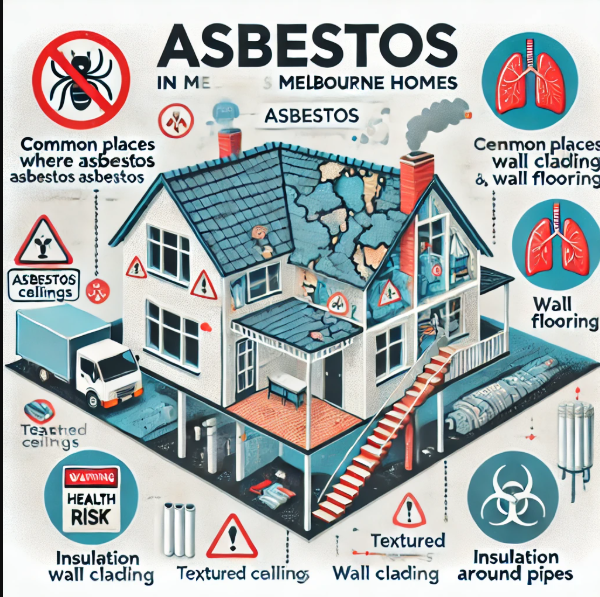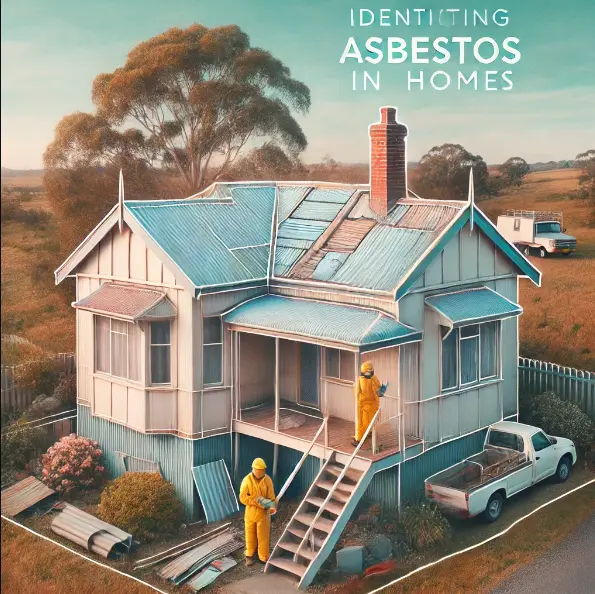Asbestos was once a popular material in construction, used for its heat resistance, durability, and affordability. However, the risks associated with asbestos exposure became widely known in the late 20th century. Today, asbestos is banned in Australia, but many homes built before 1990 still contain asbestos-containing materials (ACMs). When renovating an older home in Melbourne, disturbing these materials can release harmful fibres into the air, putting your health at significant risk.
Managing asbestos safely during a renovation project requires careful planning, knowledge of the risks, and compliance with regulations. In this article, we will discuss how to safely manage asbestos during home renovations in Melbourne, from testing for asbestos to hiring the right professionals and ensuring the worksite remains safe.
1. Know the Risks of Asbestos Exposure
Asbestos-containing materials are dangerous when disturbed. If left undisturbed, they may pose little immediate risk. However, renovation work such as drilling, sanding, or demolishing can cause ACMs to release microscopic asbestos fibres into the air. These fibres, when inhaled, can cause severe lung diseases, including asbestosis, lung cancer, and mesothelioma.
While the risks of exposure are not immediate, asbestos-related diseases can take years or even decades to manifest. Therefore, it is crucial to manage asbestos properly during any renovation work to avoid health hazards.
2. Get Your Home Tested for Asbestos
Before starting any renovation work in a Melbourne property that was built before 1990, it is essential to test and monitor for asbestos. Even if the property appears to be in good condition, asbestos may still be present in materials such as:
- Roofing materials
- Floor tiles and linoleum
- Insulation (e.g., around pipes and ducts)
- Ceiling panels and wall cladding
A licensed asbestos assessor can inspect your property, take samples of suspected materials, and have them tested in a laboratory. Only a professional can confirm the presence of asbestos. Once the materials are tested, the assessor will advise whether any of the materials need to be removed or if they can remain in place.
3. Understand the Legal Requirements for Asbestos Removal
Asbestos removal is heavily regulated in Australia. The process must be carried out by licensed asbestos removalists who are trained to follow proper safety procedures. In Melbourne, asbestos removal must comply with regulations set out by WorkSafe Victoria and Safe Work Australia.
If asbestos is found during your renovation:
- You cannot remove the materials yourself. Only a licensed removalist can safely remove ACMs.
- The worksite must be isolated and contained to prevent asbestos fibres from spreading to other areas of the property.
- Asbestos waste must be properly disposed of at a licensed disposal facility to avoid contamination.
Hiring a licensed professional ensures that all legal requirements are met, reducing the risk of exposure and ensuring the health and safety of everyone involved.
4. Hire a Licensed Asbestos Removalist
If your renovation involves disturbing asbestos-containing materials, you must hire a licensed asbestos removalist. These professionals are trained in handling asbestos safely and in compliance with local regulations. Hiring a licensed removalist ensures that:
- Proper safety protocols are followed, such as using personal protective equipment (PPE) and sealing off work areas to prevent fibre release.
- Air quality testing is conducted to ensure that no asbestos fibres remain in the air after removal.
- Waste disposal is managed properly, ensuring that asbestos-containing materials are transported to approved disposal sites.
Hiring an unlicensed contractor or attempting to remove asbestos yourself can result in exposure, legal issues, and potentially hefty fines.
5. Set Up Containment and Air Filtration
When asbestos-containing materials need to be removed, the first step is to contain the area to prevent fibres from spreading. This involves sealing off the affected area with plastic sheeting and setting up a negative pressure system. Negative pressure ensures that any airborne asbestos fibres are filtered through high-efficiency particulate air (HEPA) filters, which capture the harmful particles before they can escape into the surrounding areas.
During the removal process, the work area must remain isolated from other parts of the home. Workers should wear protective clothing, including respirators, gloves, and disposable coveralls, to ensure that no asbestos fibres are released into the environment.
6. Conduct Air Quality Testing After Removal
After the asbestos materials have been removed, it is crucial to perform air quality testing. This step ensures that no airborne asbestos fibres remain in the work area. A licensed asbestos assessor will take air samples and have them analysed in a laboratory. If the results show that the air is clear of asbestos, the site is considered safe for further work.
If the air quality tests indicate that asbestos fibres are still present, additional cleaning and testing will be required before the area can be cleared for occupancy or further renovation work.
7. Properly Dispose of Asbestos Waste
Once the asbestos-containing materials are removed, they must be safely packaged and disposed of in accordance with regulations. The waste must be sealed in heavy-duty plastic bags or containers and clearly labelled to indicate the presence of asbestos.
The waste is then transported to an approved asbestos disposal facility, where it will be safely processed. Improper disposal of asbestos can lead to serious legal consequences and health risks, so it is vital that the waste is handled by professionals and taken to a facility designed to handle hazardous materials.
8. Ongoing Safety and Monitoring
After asbestos removal and air quality testing, the renovation work can proceed. However, it is important to maintain ongoing safety measures during the remainder of the project. If there are any remaining asbestos-containing materials in the building, they should be properly managed and monitored. Ensure that any areas containing asbestos are properly labelled, and conduct regular inspections for signs of damage or deterioration.
If further renovations or disturbances are planned in areas that contain asbestos, consult a licensed professional to ensure the materials are handled safely.
Managing Asbestos Safely During A Renovation
Managing asbestos safely during a renovation is critical to ensuring the health and safety of everyone involved in the project. By understanding the risks, getting your property tested, hiring a licensed asbestos removalist, and following all legal requirements and safety protocols, you can minimise the dangers of asbestos exposure.
If you discover asbestos during your Melbourne renovation, don’t attempt to remove it yourself. Always hire a licensed professional to handle the removal and disposal of asbestos-containing materials. Proper management of asbestos during your renovation will not only protect your health but also ensure that your project runs smoothly and complies with all regulations.
For more information on asbestos testing and removal during home renovations in Melbourne, refer to our Comprehensive Asbestos Safety Guide.





